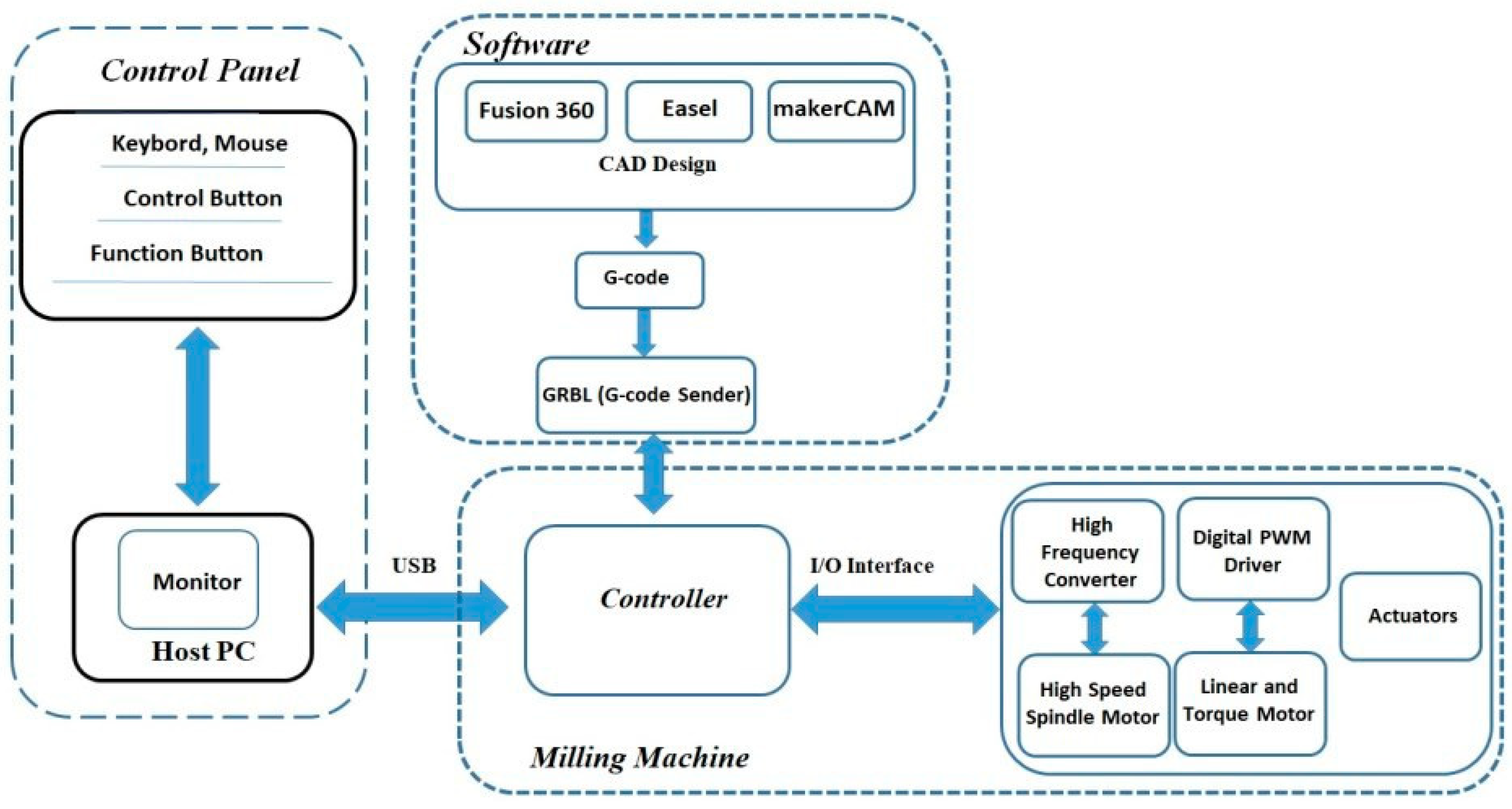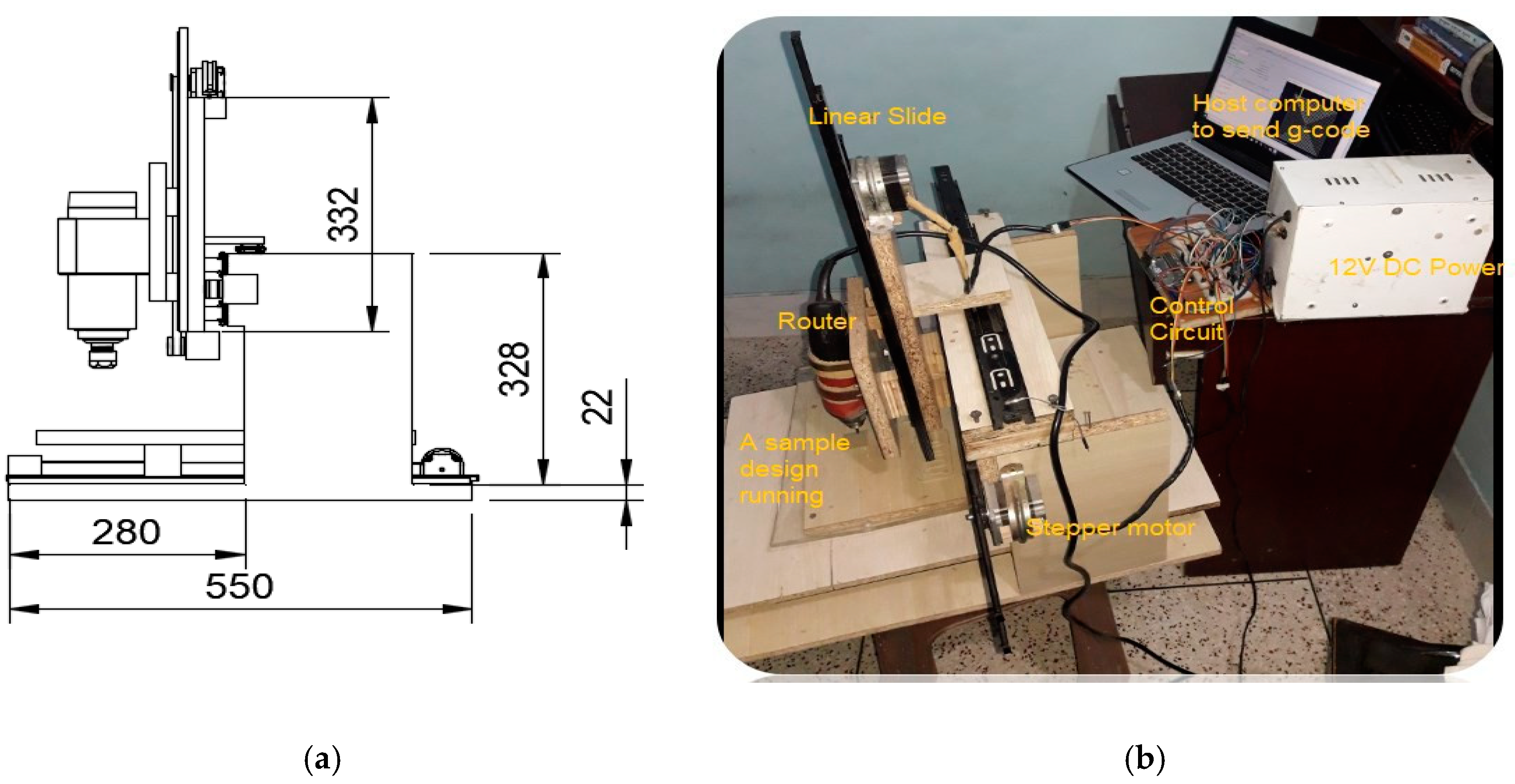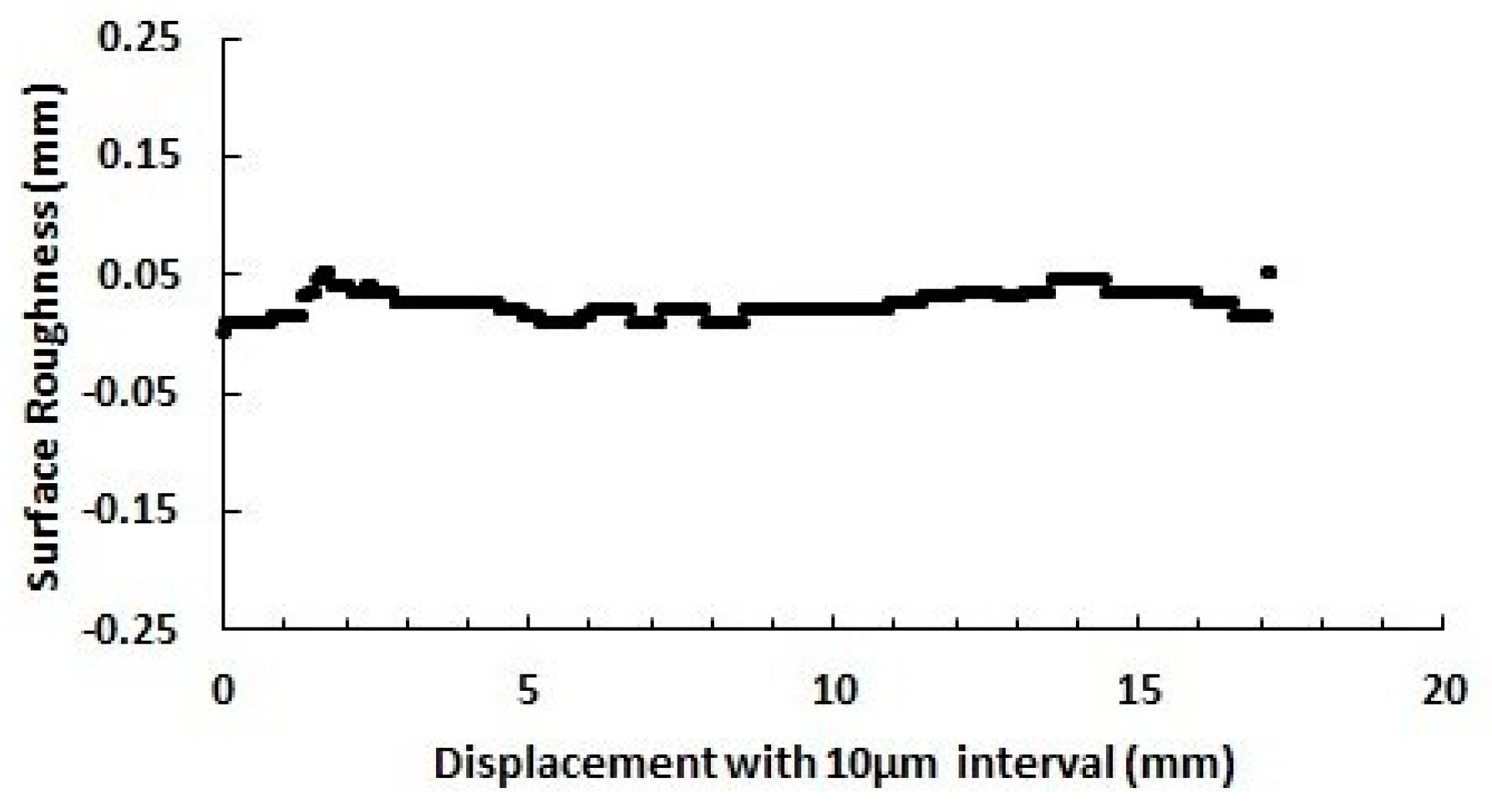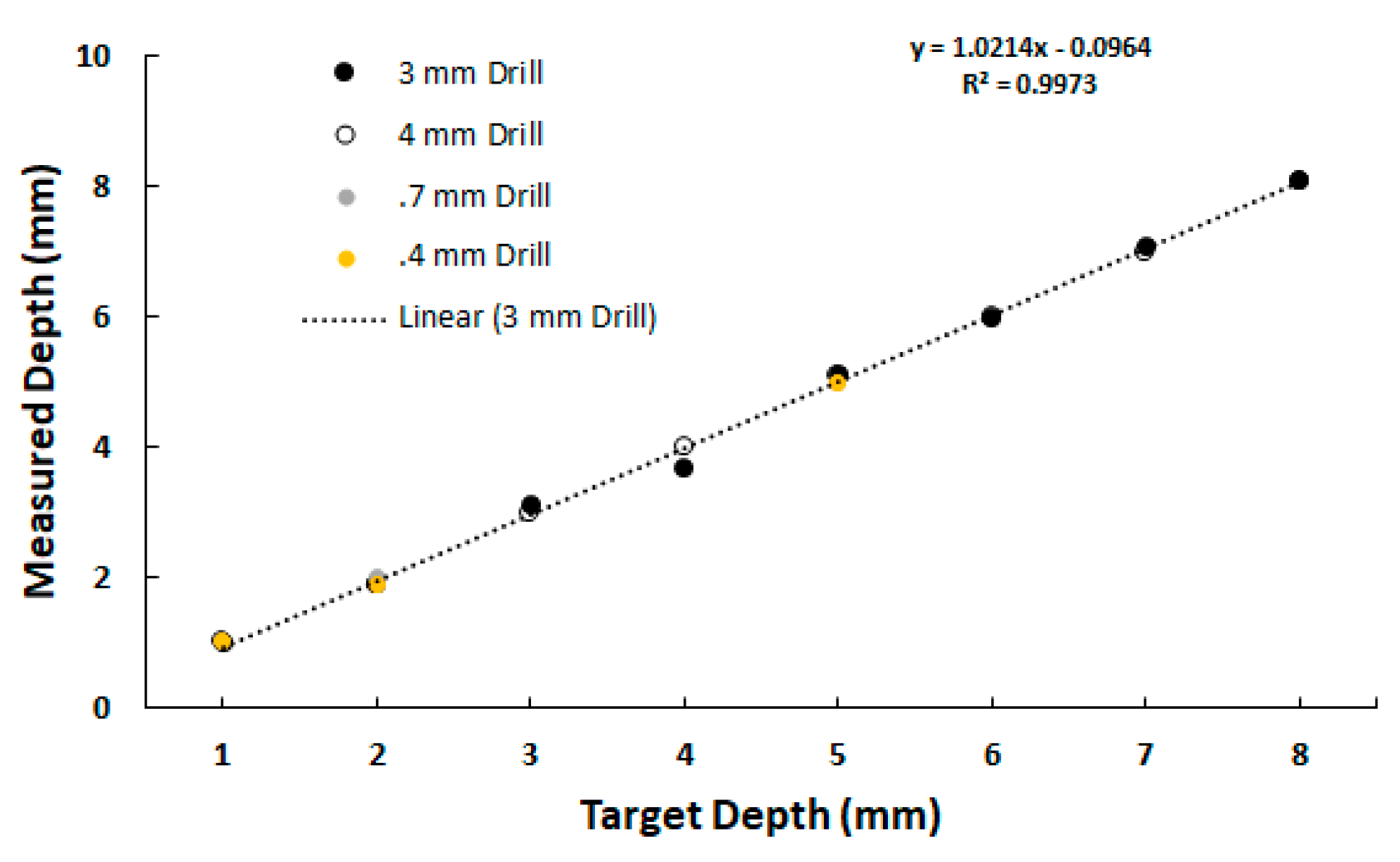Low Cost Micro Milling Machine for Prototyping Plastic Microfluidic Devices †
Abstract
:1. Introduction
2. Materials and Methods
3. Results
4. Conclusions
References
- Bhatia, S.N.; Ingber, D.E. Microfluidic organs-on-chips. Nat. Biotechnol. 2014, 32, 760–772. [Google Scholar] [CrossRef] [PubMed]
- Squires, T.M.; Quake, S.R. Microfluidics: Fluid physics at the nanoliter scale. Rev. Mod. Phys. 2005, 77, 977. [Google Scholar] [CrossRef]
- Guckenberg, D.J.; de Groot, T.E.; Wan, A.M.; Beebe, D.J.; Young, E.W. Micromilling: A method for ultra- rapid prototyping of plastic microfluidic devices. Lab Chip 2015, 15, 2364–2378. [Google Scholar] [CrossRef] [PubMed]
- Yen, D.P.; Ando, Y.; Shen, K. A cost-effective micromilling platform for rapid prototyping of microdevices. Technology (Singap. World Sci.) 2016, 4, 234–239. [Google Scholar] [CrossRef] [PubMed]
- Tanaka, M. Development of desktop machining microfactory. Riken Rev. 2001, 34, 46–49. [Google Scholar]
- Kussul, E. Development of micromachine tool prototypes for microfactories. J. Micromech. Microeng. 2002, 12, 795–812. [Google Scholar] [CrossRef]





Publisher’s Note: MDPI stays neutral with regard to jurisdictional claims in published maps and institutional affiliations. |
© 2018 by the authors. Licensee MDPI, Basel, Switzerland. This article is an open access article distributed under the terms and conditions of the Creative Commons Attribution (CC BY) license (https://creativecommons.org/licenses/by/4.0/).
Share and Cite
Hossain, M.M.; Rahman, T. Low Cost Micro Milling Machine for Prototyping Plastic Microfluidic Devices. Proceedings 2018, 2, 707. https://doi.org/10.3390/proceedings2130707
Hossain MM, Rahman T. Low Cost Micro Milling Machine for Prototyping Plastic Microfluidic Devices. Proceedings. 2018; 2(13):707. https://doi.org/10.3390/proceedings2130707
Chicago/Turabian StyleHossain, Md Mubarak, and Tanzilur Rahman. 2018. "Low Cost Micro Milling Machine for Prototyping Plastic Microfluidic Devices" Proceedings 2, no. 13: 707. https://doi.org/10.3390/proceedings2130707
APA StyleHossain, M. M., & Rahman, T. (2018). Low Cost Micro Milling Machine for Prototyping Plastic Microfluidic Devices. Proceedings, 2(13), 707. https://doi.org/10.3390/proceedings2130707




